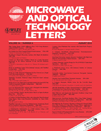
MICROWAVE AND OPTICAL TECHNOLOGY LETTERS
Scope & Guideline
Illuminating the Path of Research in Microwave and Optical Fields
Introduction
Aims and Scopes
- Microwave Technologies:
Research and development of microwave components, systems, and applications, including antennas, amplifiers, filters, and sensors. - Optical Technologies:
Innovations in optical devices and systems, exploring areas such as optical communication, sensors, and imaging technologies. - Integration of Microwave and Optical Systems:
Studies that combine microwave and optical technologies for enhanced performance in telecommunications, sensing, and imaging. - Advanced Materials and Fabrication Techniques:
Exploration of new materials (e.g., metamaterials, nanomaterials) and fabrication methods for improved device performance and functionality. - Theoretical and Computational Modeling:
Development of models and simulations to predict the behavior of microwave and optical systems, contributing to the design and optimization of devices.
Trending and Emerging
- 5G and Beyond Technologies:
A significant increase in research related to 5G applications, including antennas, filters, and communication systems that cater to next-generation mobile networks. - Metamaterials and Plasmonics:
Growing interest in the application of metamaterials and plasmonic structures for innovative devices, particularly in antennas and sensors. - Machine Learning Applications:
The integration of machine learning techniques for optimization and design processes in microwave and optical systems is becoming increasingly prominent. - Terahertz Technologies:
Research focused on terahertz frequency applications is on the rise, exploring new devices and systems for communication and sensing. - Flexible and Wearable Technologies:
Emerging studies on flexible and wearable microwave and optical devices, highlighting their applications in health monitoring and personal electronics.
Declining or Waning
- Conventional RF Circuit Design:
There is a decreasing emphasis on traditional RF circuit design techniques as the field moves towards more integrated and multifunctional approaches. - Basic Antenna Theory:
While foundational studies remain important, there has been a noticeable reduction in purely theoretical papers on basic antenna principles, with more focus on applications and novel designs. - Passive Components:
Research on passive components like resistors and capacitors in microwave applications is waning, as the community shifts towards active components and integrated solutions.
Similar Journals
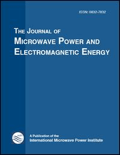
JOURNAL OF MICROWAVE POWER AND ELECTROMAGNETIC ENERGY
Catalyzing Collaboration in Cutting-edge Electromagnetic ResearchThe Journal of Microwave Power and Electromagnetic Energy, published by Taylor & Francis Inc, is a premier scholarly journal dedicated to the advancement of research in the fields of microwave power and electromagnetic energy. With a strong focus on innovative applications and theoretical developments, this journal serves as a vital platform for researchers, professionals, and students alike, fostering collaboration and dissemination of cutting-edge findings since its inception in 1985. Although currently categorized in the Q3 and Q4 quartiles across various disciplines such as Ceramics and Composites, Electrical and Electronic Engineering, and Condensed Matter Physics, the journal consistently emphasizes both experimental and computational methodologies. As part of its commitment to excellence, the journal is indexed in Scopus, boasting a rank of #76 in Metals and Alloys and a percentile standing that reflects its niche yet significant role in the scientific community. While the journal does not offer Open Access options, it remains an essential resource for those invested in the evolving landscape of microwave technology and electromagnetic energy research, with converged years extending through 2024. Researchers are encouraged to contribute impactful articles that can inspire breakthroughs and fuel further inquiries in this dynamic field.
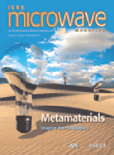
IEEE MICROWAVE MAGAZINE
Advancing microwave engineering for a brighter tomorrow.IEEE Microwave Magazine is a prestigious publication dedicated to advancing the field of microwave engineering, including theoretical developments and practical applications across various industries. Published by the IEEE-Institution of Electrical and Electronics Engineers, the magazine provides cutting-edge insights and comprehensive coverage of topics such as condensed matter physics, electrical and electronic engineering, and radiation, earning a notable Q2 ranking across these domains based on 2023 metrics. While it maintains traditional subscription access, the magazine's relevance is underscored by its substantial impact factor, making it a crucial resource for researchers, professionals, and students alike. With a commitment to fostering innovation and interdisciplinary collaboration, IEEE Microwave Magazine plays an essential role in broadcasting critical advancements and applications within the ever-evolving microwave technology landscape. This dynamic publication is designed to keep its audience informed and engaged, serving as a vital platform for the exchange of knowledge and ideas in this specialized field.

MICROWAVE JOURNAL
Navigating the Complexities of Microwave TechnologyMicrowave Journal, published by Horizon House Publications Inc, is a well-established platform in the field of Electrical and Electronic Engineering, specifically focusing on the advancements and applications of microwave technology. Since its inception in 1969, the journal has consistently delivered high-quality research, making it an invaluable resource for professionals, researchers, and students alike. Despite its Q4 ranking in Scopus for 2023, the journal plays a crucial role in disseminating knowledge and fostering innovation within its niche, showcasing developments across various areas including microwave systems, components, and applications. Although it does not offer Open Access, the journal’s comprehensive insights and peer-reviewed articles are essential for anyone looking to deepen their understanding of microwave engineering. By maintaining a rigorous editorial standard, Microwave Journal continues to shape the discussion and evolution of microwave technology.

Acta Photonica Sinica
Exploring the Depths of Optical InnovationActa Photonica Sinica is a peer-reviewed academic journal published by SCIENCE PRESS, focusing on the fields of atomic and molecular physics and optics. Since its inception in 1997, this journal has provided a crucial platform for researchers and professionals to share cutting-edge findings and advancements in photonics and related areas. Despite its current positioning in the Q4 quartile for both atomic and molecular physics and optics, Acta Photonica Sinica remains a significant contributor to the scholarly community, fostering innovative discussions and collaborations. The journal does not currently offer open access, providing a selective but impactful repository of knowledge for readers in China and beyond. As the scientific landscape evolves, the journal aims to enhance its scope and impact, addressing the challenges and opportunities within the photonics domain. Researchers, students, and professionals interested in the latest theoretical and experimental studies will find a wealth of information that emphasizes the pivotal role of optics in scientific and technological advancements.

Progress in Electromagnetics Research-PIER
Leading the Charge in Electromagnetics ExcellenceProgress in Electromagnetics Research-PIER, published by EMW PUBLISHING, is an esteemed academic journal that stands at the forefront of the fields of Condensed Matter Physics, Electrical and Electronic Engineering, and Radiation. With an impressive impact factor reflected in its Q1 quartile rankings across these disciplines, PIER serves as a critical platform for disseminating high-quality research findings and advancements from 2000 onwards, with the latest contributions expected through 2024. The journal's commitment to excellence is evident as it holds prominent positions in Scopus rankings, including a remarkable 95th percentile in the field of Radiation. Researchers, professionals, and students will find PIER invaluable for accessing cutting-edge topics and methodologies that push the boundaries of electromagnetics research. For facile access, the journal is published in both ISSN (1070-4698) and E-ISSN (1559-8985) formats, ensuring that vital knowledge is readily available to its audience.

OPTICS AND SPECTROSCOPY
Exploring the Depths of Optics and SpectroscopyOptics and Spectroscopy is a pivotal peer-reviewed journal published by Pleiades Publishing Inc, focusing on the intricate fields of atomic and molecular physics, as well as optics. Established in 1972, and enjoying a legacy of convergence periods that reinforce its commitment to the evolving landscape of these scientific domains, the journal aims to disseminate high-quality research that advances our understanding of light-matter interactions, electronic materials, and spectroscopic techniques. Despite its current Q4 categorization in both the Atomic and Molecular Physics and Electronic, Optical and Magnetic Materials fields, with corresponding Scopus rankings reflecting its developing influence, the journal remains a valuable resource for researchers and professionals seeking to publish their findings, explore new methodologies, and connect with a community dedicated to innovation in optics. Although there is currently no open access option, the journal's expansive readership and its stability in publication over the decades make it an important platform for both established and emerging researchers in the field.

OPTICAL MATERIALS
Unveiling the Potential of Optical MaterialsOPTICAL MATERIALS is a peer-reviewed journal published by Elsevier, focusing on the intricate field of optical materials within various scientific domains including atomic and molecular physics, electronic engineering, and chemistry. With an impact factor indicative of its relevance, it ranks in the Q2 category across multiple areas such as Electrical and Electronic Engineering, and Inorganic Chemistry, highlighting its critical position in advancing research and innovation. Established in 1992 and continuing its contribution until 2024, this journal serves as a vital resource for researchers and professionals aiming to disseminate significant findings in material sciences, particularly those related to optical properties and applications. While it does not offer open access, the journal remains essential for academia and industry alike, ensuring the continued exchange of valuable knowledge in this rapidly evolving field.
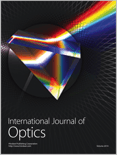
International Journal of Optics
Exploring the Frontiers of Optical ScienceWelcome to the International Journal of Optics, a distinguished publication dedicated to advancing the field of optics and its interdisciplinary applications. Published by HINDAWI LTD, this open-access journal has been pivotal in fostering knowledge since its inception in 2009. With a robust focus on atomic and molecular physics as well as electronic, optical, and magnetic materials, the journal has carved its niche within Q3 quartile rankings in these categories for 2023, signifying its growing impact and relevance in the scientific community. Researchers and professionals will find a rich repository of innovative and cutting-edge research articles that not only address fundamental aspects of optics but also explore practical applications across various domains. The journal's aim is to promote high-quality research dissemination, enhancing collaboration among scientists and ensuring that pivotal findings reach a global audience. Join us in exploring the dynamic world of optics—where your contributions help shape the future of science.

International Journal of Optomechatronics
Exploring the synergy of optics, mechanics, and electronics.The International Journal of Optomechatronics, published by Taylor & Francis Inc, is a leading peer-reviewed journal dedicated to the convergence of optics, mechanics, and electronics. With an ISSN of 1559-9612 and an E-ISSN of 1559-9620, this esteemed journal has been at the forefront of research in Electrical and Electronic Engineering, Instrumentation, and Mechanical Engineering since its inception in 2007. Its exceptional reputation is reflected in its Q1 rankings across multiple categories as of 2023, positioning it among the top-tier journals in the field. As an open access publication since 2017, it encourages wide dissemination of innovative research and technological advancements. With impactful contributions that span applications in robotics, control systems, and advanced manufacturing, the journal serves as a vital resource for researchers, professionals, and students aiming to remain at the cutting edge of optomechatronic science and engineering.
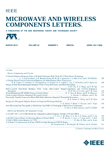
IEEE MICROWAVE AND WIRELESS COMPONENTS LETTERS
Delivering Breakthroughs in Electrical Engineering and Applied Physics.IEEE Microwave and Wireless Components Letters, published by the esteemed IEEE - Institute of Electrical and Electronics Engineers, stands as a crucial platform for disseminating innovative research in the realms of microwave and wireless technology. With an impact factor that emphasizes its significance in the academic community, the journal has achieved notable rankings, including Q1 in Condensed Matter Physics and Q2 in Electrical and Electronic Engineering for 2023. Covering an extensive range of topics pertinent to practitioners and theorists alike, it aims to provide rapid publication of short, concise letters reporting on cutting-edge research findings that drive the field forward. Although coverage in Scopus has been discontinued, the journal remains an influential resource, reflecting its long-standing dedication to advancing electrical engineering and applied physics, thus making it an essential read for anyone invested in these dynamic disciplines.